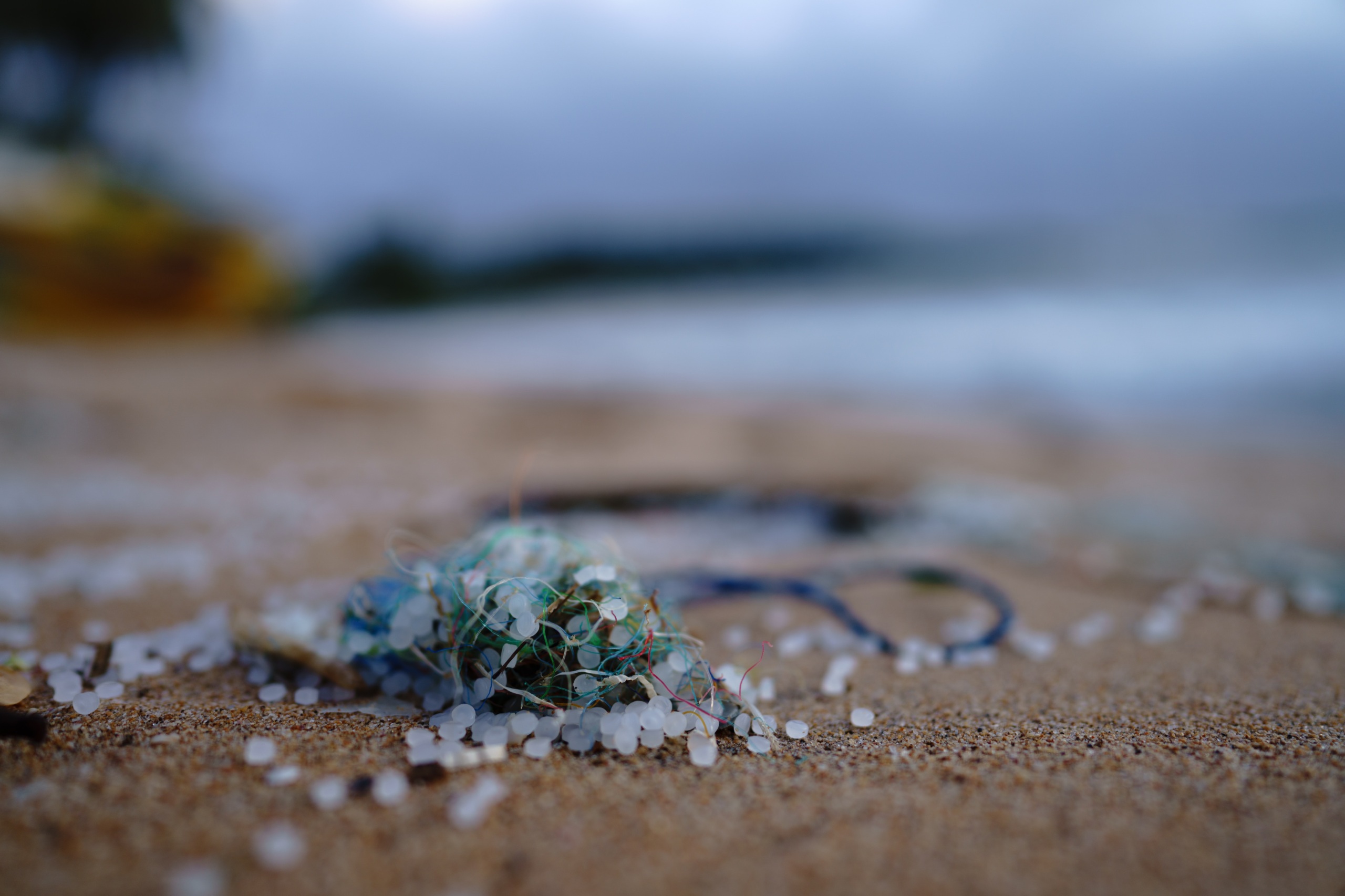
Tell your U.S. senators: Support the Plastic Pellet Free Waters Act
To protect our environment and reduce pollution, we need to reduce unnecessary packaging, especially plastics. Producer responsibility incentivizes companies to eliminate wasteful packaging and supports the expansion of recycling so we can reuse materials instead of mining, drilling, and logging to make our bags, boxes, and bottles.
Updated
Take Action
Let’s begin by looking at an example from everyday life – ordering a simple tube of toothpaste.
The tube itself is packaging and should be enough to keep the toothpaste from leaking out. But that tube may have additional packaging – packed in a box, wrapped in plastic, enclosed within another box that is cushioned with styrofoam peanuts (and maybe wrapped in plastic again) — all for a single product.
Now multiply that packaging by all the cans, bottles, jars, jugs, bags, boxes and wrapping that encase all the things we buy every day.
That is a lot of packaging.
Whether it’s a box or a bag, a can or a bottle, plastic or aluminum, shrink wrapped or filled with foam peanuts, all of the stuff that packages what we buy took resources, energy and/or water to produce. That has big environmental impacts.
By reducing the amount of unnecessary packaging we create and use, we conserve water, energy and resources and forego much of the pollution that goes into making our stuff.
We get further environmental benefits by recycling the materials that go into the packaging we do need – collecting and reusing the cans, bottles, boxes and paper so it can be turned into something else. For example:
Unfortunately, Colorado is particularly bad at recycling.
The latest State of Recycling and Composting in Colorado report, released by Eco-Cycle and CoPIRG, found that Colorado’s recycling rate is persistently low. It’s 16%, which is just half of the national average.
This means that 84% of our waste is not being recycled and ends up in landfills instead of going back to companies to reuse in new bottles, cans and boxes.
By design, plastic takes hundreds of years to fully degrade — which means every piece of plastic ever produced is still out there.
Plastic pollution, especially as is breaks into smaller microplastics, can harm wildlife when they mistake it for food.
Microplastics, plastics smaller than 5mm, have infiltrated our waterways and have been found in isolated areas in national parks and wilderness areas, carried there in the wind and the rain.
Our microplastics in waterways report found microplastics in 100% of the samples we took from 16 different waterways in Colorado.
We need to reduce the amount of plastic waste entering our state.
Sadly, this scene, of a Great Blue Heron, a frequent inhabitant of the Colorado front range, surrounded by plastic garbage, is too common.

Great blue heron next to plastic pollutionPhoto by Renee Grayson | CC-BY-2.0
In 2022, Colorado passed House Bill 22-1355, which will reduce unnecessary packaging and decrease pollution.
The bill has three major pieces.
First, producers will have to pay a new fee for every piece of packaging they use for their products. So if your product comes in a tube, packaged in a box and wrapped in shrink wrap, you’ll pay for each of those layers.
This price signal will incentivize companies to eliminate any unnecessary packaging. Maybe that tube of toothpaste doesn’t also need a box and shrink wrap.
And less packaging produced means less pollution produced from drilling, logging, and mining.
Second, the money producers pay based on their remaining packaging will go into expanding and simplifying Colorado’s recycling system.
Right now, hundreds of thousands of Coloradans don’t have access to convenient recycling so a lot of glass, paper and aluminum that we could reuse is just going into the landfill.
The producer responsibility system will raise enough money to give everyone in Colorado recycling services as convenient as their trash services so more of that glass, paper and aluminum is collected and sent back to companies to use.
Third, the producer responsibility system will create a statewide recyclables list. This will make knowing what’s recyclable easier for Coloradans. But it will also allow us to charge companies more money if their packaging is not recyclable and not on the list, so we can further disincentivize non-recyclable products like many forms of plastic.
How much will the fee be per packaging?
Given the incredible amount of stuff that comes into our state each day, the fee added to the packaging will likely be very small per package – a fraction of a penny. There is little evidence that the fees are large enough to impact product prices.
Overall, producer responsibility creates a positive feedback loop that reduces wasteful packaging and pollution:
To create a producer responsibility program, the law mandated the creation of a Producer Responsibility Organization (PRO) that would be in charge of implementing and managing the program.
In Colorado, the PRO is made up of major product manufacturers and will be responsible for raising the money, collecting packaging data, funding the expansion of recycling, and meeting the state’s recycling targets.
The Colorado Department of Public Health and Environment (CDPHE) plays an oversight role of the PRO, which is the Circular Action Alliance (CAA). There is also an Advisory Board that reviews what the PRO develops and proposes.
The CAA’s first major requirement was to complete a statewide Needs Assessment to evaluate the recycling infrastructure across the entire state to determine how much it would cost to support our current system and expand recycling so everyone has recycling services as easy as they have trash services.
The Needs Assessment took months to complete with comments and participation from dozens of stakeholders including waste haulers, recycling centers, nonprofits, local governments and large industries.
Over 100 comments were received in response to the Colorado Needs Assessment, with only 5% expressing concerns. Many responses praised the program’s convenience, cost-effectiveness, and environmental benefits.
Thanks to the robust public input, the proposal was revised to include some of our recommendations such as delaying flexible plastic recycling until 2035 and adding hard-to-recycle collection events by 2030.
The Needs Assessment also gathered a lot of data that gives us a better sense of the current state of our recycling system and the gaps.
All of this information informed the final proposal which was cleared by the Joint Budget Committee on April 17, 2024.
Colorado’s Producer Responsibility system would:
According to the presentation from CDPHE to the JBC on March 12, the producer responsibility system will cost an average of $250 million per year by 2035.
That will cover the cost of the current recycling system we have and the upgrades and expansions listed above.
A lot of that is already being paid for by households and taxpayers right now. Instead, product manufacturers will now cover those costs.
Given the incredible amount of stuff that comes into our state each day, the fee that product manufacturers will pay per package will be very small – a fraction of a penny and should not impact prices.
This is a good investment for product manufacturers – it’s why so many large companies including Coca-Cola, PepsiCo, Walmart, General Mills and Unilever are part of the program through the Circular Action Alliance.
Product manufacturers need materials to make their packaging. Colorado’s bad recycling rates mean these companies can’t get those materials from our recycling bins, increasing the chances they have to mine, drill and log for virgin materials.
But Colorado’s Producer Responsibility program changes that. Hundreds of thousands of tons of more materials will be available here through our expanded recycling system, providing a local, reliable source of paper, glass, aluminum, etc.
That in turn reduces the pollution impacts mentioned above.
Two crucial steps remain before 2026 implementation:
The CAA will be developing the fee that producers will pay per packaging – that alone should cut some waste since companies won’t want to pay a fee on packaging that isn’t necessary. We are advocating that these fees must be higher on non recyclable packaging (like excessive bubble wrap) to further ensure that companies have an incentive to switch to more recyclable options.
Plastic pollution is a major concern in our state, and to maximize the success of the Producer Responsibility program, we need to ensure companies stop producing so much packaging, especially plastics, in the first place.
Henry leads Environment Colorado's campaigns to reduce waste and protect wildlife and open spaces. He is a bird watcher and amateur wildlife photographer, which is what drew him in to doing environmental work.
